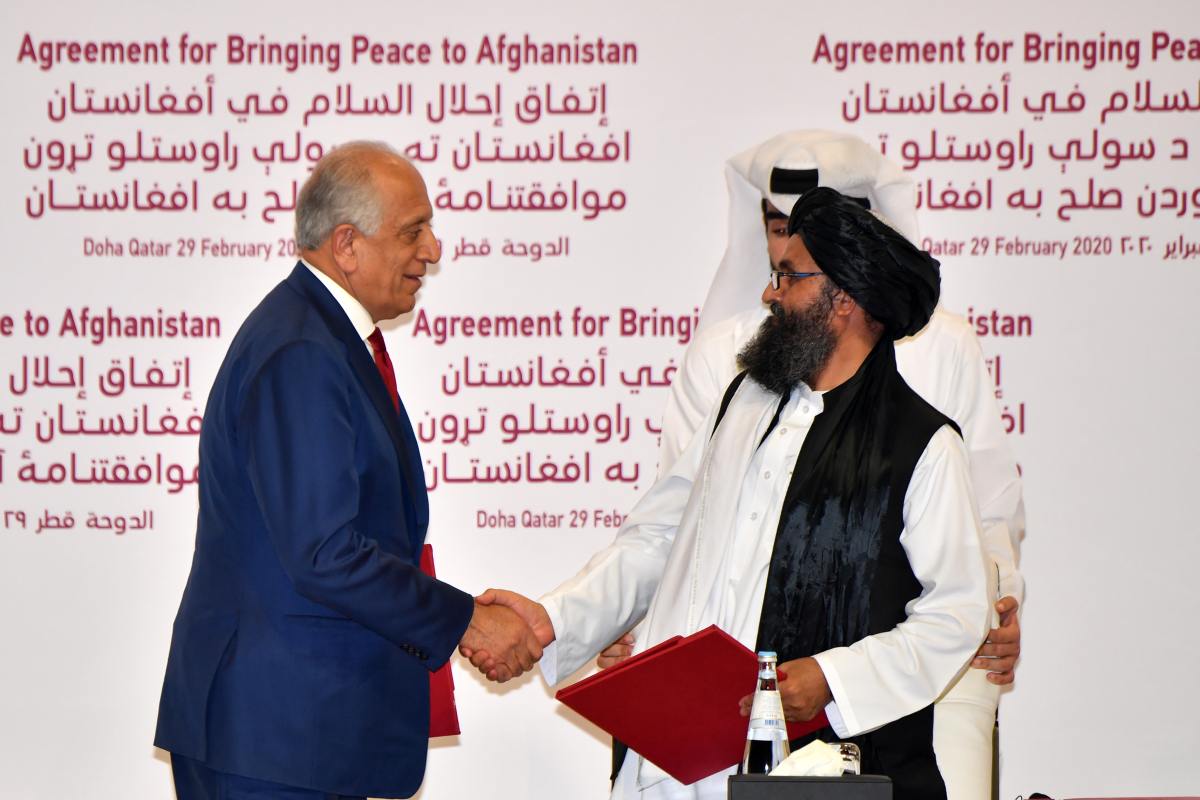The climax has come. The relationship between the United States and Taliban is showing some signs of being on the cusp of an upturn. They have signed a peace agreement on 29 February at Doha. According to this agreement, the US is to withdraw troops from Afghanistan in exchange for a Taliban promise not to allow the country to be used by international terrorist groups. Taliban also agreed to a seven-day “reduction in violence” before the US signs any deal.
In addition, some prisoners whose release was demanded by the Taliban will also be freed. India also attended the 29 February event as an observer. The Ministry of External Affairs sent two former diplomats, Amar Sinha and TCA Raghavan, to be present there. It is well known that US forces entered Afghanistan in October 2001 as a part of a NATO attack on the then Taliban government headed by its late chief Mullah Omar.
Advertisement
The US presence has continued since then. In the process the Americans lost almost 1,400 soldiers and spent an estimated one trillion dollars. At present there is chaos in Kabul which is an advantage for the Taliban to be used to bolster their bargaining position while dealing with the US and fellow Afghan stakeholders. It is not yet certain how Washington would respond to the simmering controversy over election results.
While the election authorities have declared incumbent president Ashraf Ghani as the winner, runner-up Dr Abdullah Abdullah has not only rejected the results but also announced he will form his own parallel government. They have pushed down the hope that the newly elected regime would be able to form an inclusive team to talk to the Afghan Taliban. It is pertinent to mention that the Afghan Independent Election Commission announced President Ashraf Ghani as the winner of the September 28 presidential election. Ghani secured 50.64 per cent of the votes.
The rejection of the results by rival candidates Abdullah Abdullah and Gulbadin Hikmatyar has aggravated the political crisis in Kabul. Perhaps the major capitals of the world are waiting for the outcome of the deal between the US and Taliban, which may envisage a new power sharing formula to govern the already fragmentised country. As per election results, Ghani swept the poll in 16 southern and eastern provinces while Abdullah stood the winner in 18 provinces in the northern and central regions of Afghanistan.
Even though this was the fourth election in the country, the democratic exercises have failed to address the deep ethnic divides. The US-Taliban agreement would allow about 13,000 American troops and Air Force elements along with 10,000 private security personnel – all ex-soldiers – to withdraw from the country. The Trump administration is desperate to pull out of Afghanistan and may opt to do so regardless of whether it can build a ceasefire capable of lasting for a period of time.
Precisely what the clause a “reduction in violence” written into preliminary documents means has not been clarified and the government of President Ashraf Ghani, which has now been declared the winner of the Afghan elections held last year, has not been included in the talks. The relationship between this government and the Taliban will be central to the future. The Taliban supported by the Pakistani establishment are primarily interested in moving back into the political mainstream.
It is also likely that their ability to gain a better grasp over the country will increase once the US withdraws some of its troops. How the Afghan government handles this is to be seen. The US has carried out similar pullouts in the past, to serve its own purposes. There is no reason to believe this will not happen again. It is unclear what power is available to the US to rein in the Taliban should they re-launch violence after a US withdrawal.
The Afghan government is still being left out of the picture and analysts argue that the whole exercise is simply a face-saving effort staged by Washington and that in the longer run it will not help build the lasting stability that the region requires in order to ensure longer-term peace and an end to continuing militancy. Pakistan is in desperate need of financial assistance as its economy is collapsing. It would like the Americans to resume the aid that they cut off because they thought Pakistan was frustrating them in Afghanistan.
But it is far more important for the State Department to remain engaged with Afghanistan. There will, naturally, be a fair degree of chaos once the Afghan government and Taliban stop fighting and start working together. The best bet would have been for the US-Taliban deal to include both President Ghani and Abdullah as stakeholders and any power-sharing deal should have had their roles defined as well. Taliban rejects the democratic system as being against their beliefs whereas both Ghani and Abdullah represent Afghanistan’s political class.
The country needs stability on all fronts. If this is not done, Afghanistan is likely to be governed by parallel governments. Abdullah’s coalition partner and Uzbek warlord Gen Abdul Rashid Dostum has threatened to make their own government in northern Afghanistan. The uncertainty needs to end at the earliest and the US must engage all stakeholders before it starts its pullout from Afghanistan. The US would never want the rich natural resources of Afghanistan to be open for China and Russia. Leaving Afghanistan sans a tenable modus vivendi is also not a plausible option. The Kabul regime is particularly averse to the idea.
In fact, some internal and external actors may prefer the instability to continue in Afghanistan as the present situation serves their immediate to long-term interests. In a recent op-ed piece in The New York Times, the Afghan Taliban’s second-in-command Sirajuddin Haqqanni envisioned “a new, inclusive political system in which the voice of every Afghan is reflected and where no Afghan feels excluded”. He wants the US, whose forces he had been fighting, to “play a constructive role in the post war development and reconstruction of Afghanistan”.
At this crucial juncture of time, Afghanistan cannot afford more turmoil and infighting. The cautious goodwill which has been generated between the Taliban and the US direly requires the backing of a unified Afghan nation. Political and ethnic fragmentation due to political disagreements can further add to the fragility which the country is currently grappling with. Any efforts for an intra-Afghan dialogue will not materialise if the Afghan government is kept out of the loop.
Secondly, the Afghan government is responsible for maintaining and observing a truce with the Afghan Taliban, and therefore distancing it from the peace talks by both the political opposition and the Taliban would not help in reaching a final intra-Afghan agreement. The need of the hour is to understand the complexities. President Donald Trump campaigned with the electoral message of “Promises made, promises kept”. The ending of the 19-year-long conflict in Afghanistan may fulfil that promise to some extent.
How far the Taliban and its cardinal and perennial supporter, the Pakistani Establishment (Army & ISI), would allow this US initiative to succeed and what exactly would be the role of India also needs to be seen. After all, India has invested around $3 billion in the last nineteen years. How Russia, China and Iran react in days and weeks to come is also vexatious. But one thing is certain, the future of Afghanistan remains uncertain.
(The writer is a senior IAS officer of the Punjab cadre)











